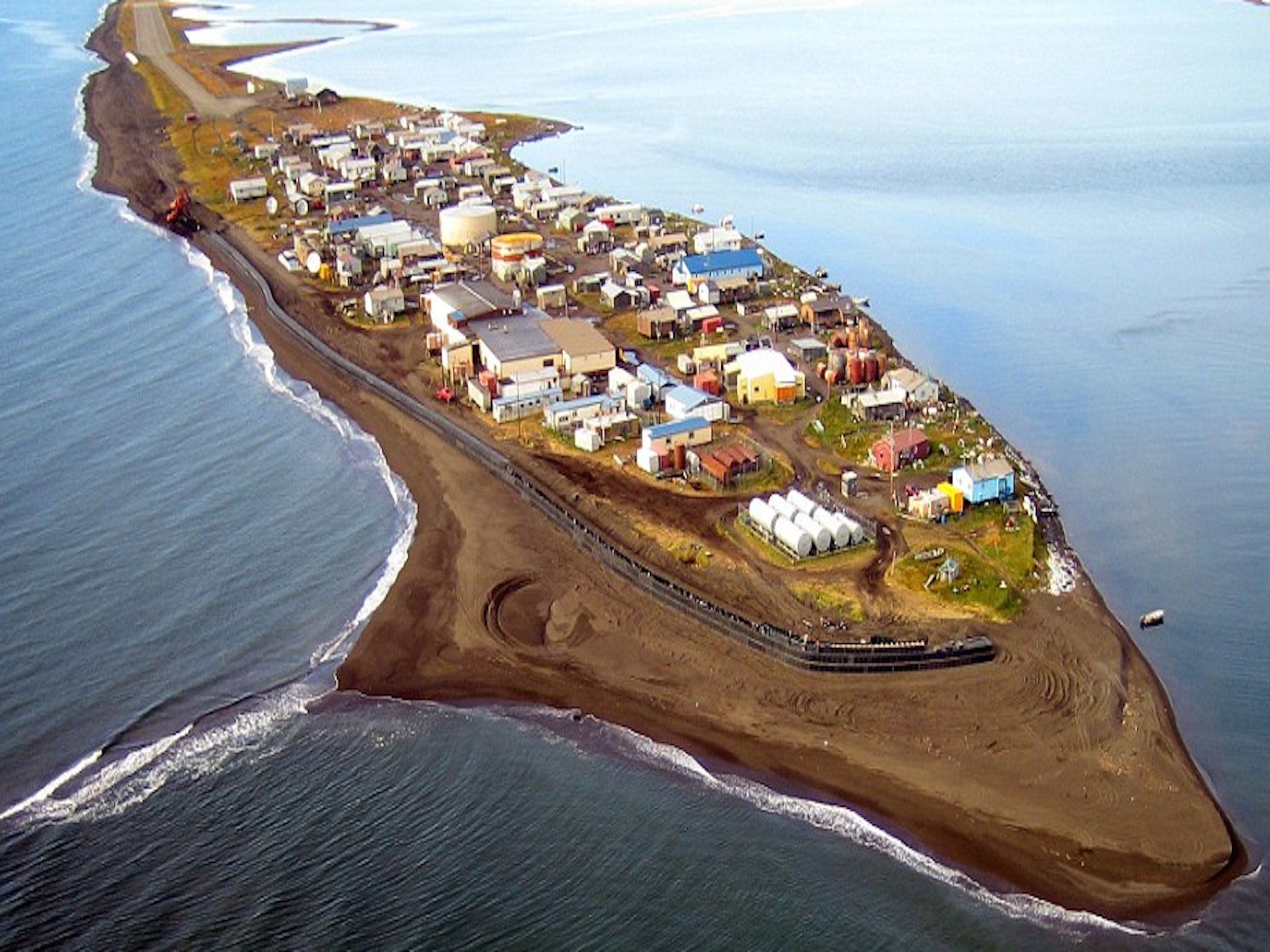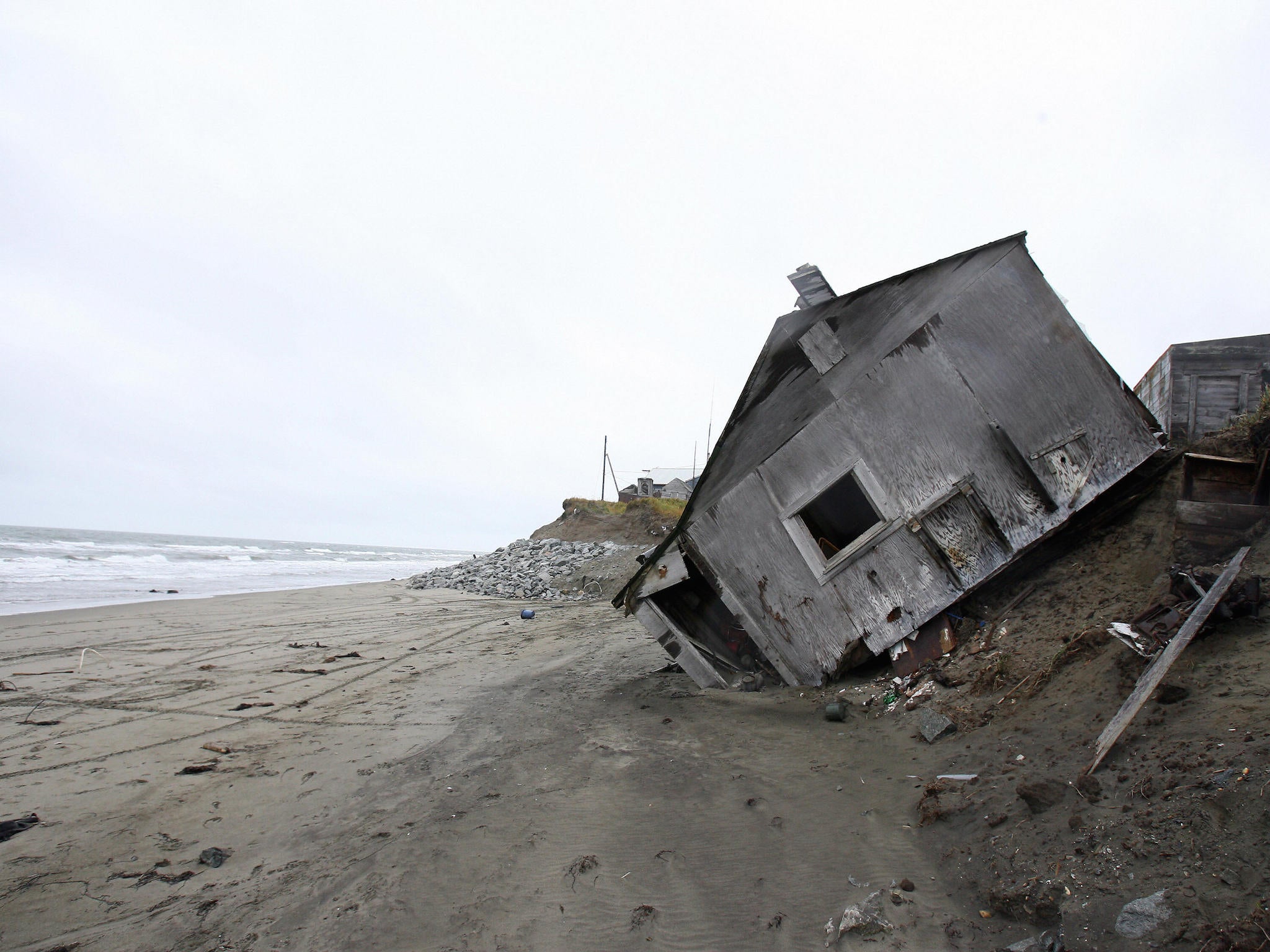Climate change threatens to put Alaska village under the sea
Villagers confronting $100m relocation

Residents of the remote Alaskan village of a Kivalina say they may be forced to relocate from their homes because of the effects of climate change.
The thinning of sea ice has meant it is not possible for the Iñupiat people of the region to hunt the bowhead whales, while the US government has warned that with less and less sea ice every year to protect the island, it could be washed away by powerful waves. Some have predicted Kivalina could be under water just 10 years from now.
“Global warming has caused us so much problems,” Joseph Swan, a Kivalina elder, told the Washington Post. “The ice does not freeze like it used to. It used to be like ten to eight feet thick, way out in the ocean.”
The issue has taken on the shape of an existential proportions, not just for the 400 or so residents Kivalina but for other similar communities in Alaska. And in the years ahead more and more coastal locations are likely to face the threat.

The cost of relocating the village, located 80 miles from the Arctic Circle, could be be as high as $100m.
Over the last 20 years or so, Alaska has emerged one of the places where the effects of climate change have been the most obvious and clearly on display. These include a reduction in sea ice, permafrost melting, roads buckling and forests being destroyed infestations of beetles because of a rise in temperatures.
Ten years ago, Hilary Clinton and John McCain went on a joint fact-finding tour of the region to look at the evidence of climate change and were shocked by what they saw.
“The question is how much damage will be done before we start taking concrete action,” Mr McCain said at a press conference in Anchorage. “Go up to places like we just came from. It's a little scary.”
Mrs Clinton added: “I don't think there’s any doubt left for anybody who actually looks at the science. There are still some holdouts, but they’re fighting a losing battle. The science is overwhelming.”
The report in the Washington Post said the plight of Kivalina had reached the ears of the US government. Last week, Sally Jewell became the first Secretary of State of the Interior to visit the town in its history.
“Your story will help the world understand what’s happening right here,” she said at a town meeting at Kivalina’s only school.
She added: “It will help us make the case for climate change in the US Congress. It will help us bring the kind of resources that we have to bring to bear for people like you, and for people in other parts of the world that live in coastal communities that are at high risk.”
Join our commenting forum
Join thought-provoking conversations, follow other Independent readers and see their replies
Comments